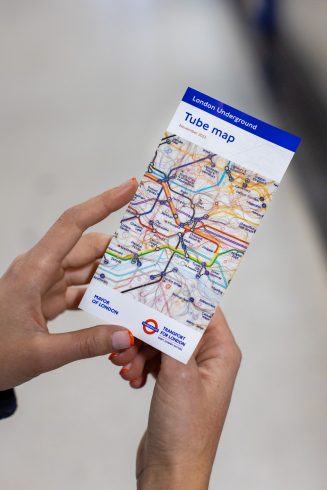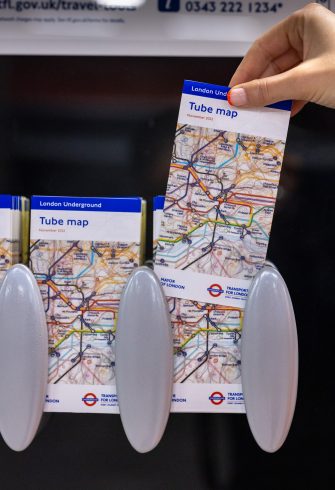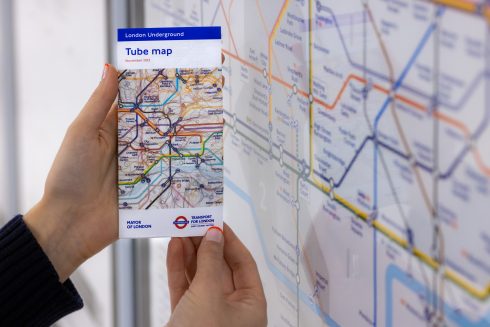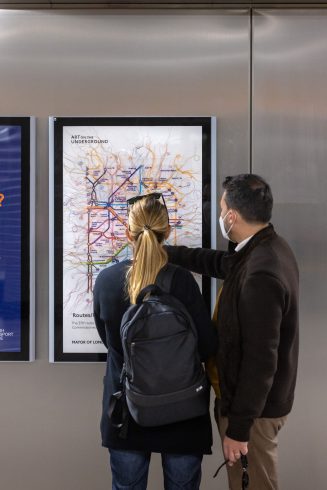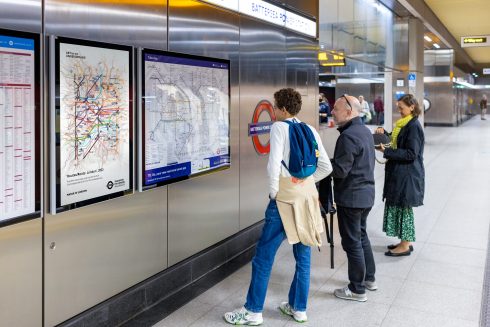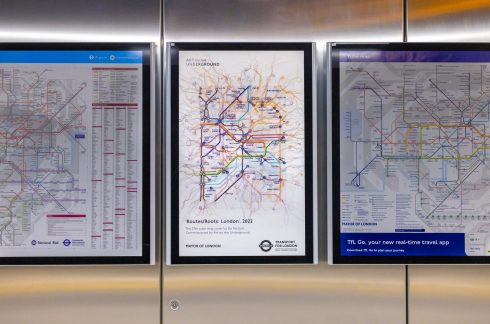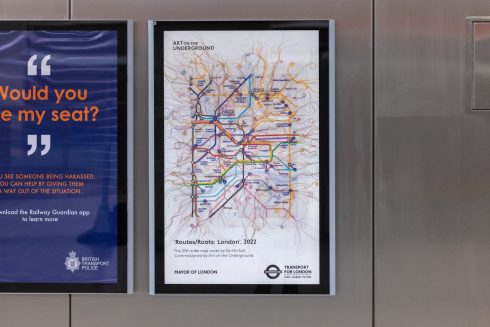Art on the Underground are pleased to present the 37th commission for the pocket Tube map cover by London-based artist Do Ho Suh.
Do Ho Suh has created an embroidered facsimile of the iconic Tube map design focusing on the routes that he habitually uses around his home and studio. The work, titled Routes/Roots: London, connects to the artist’s interest in ideas of expanded domestic space. For Suh, the concept of ‘home’ encompasses the built environment and a conceptual space; a site of memory, imagining, and potential displacement. Home is an idea that speaks to us both as individuals and collectively in society. The commission comes at a time when most of us have been forced to question, or faced restrictions to travel, both local and international.
Central to Routes/Roots is an exploration of the patterns and idiosyncrasies of daily travel for everyone in London, during and following the pandemic. The Tube map cover connects to the new and old ways we navigate, the ways we move through and around the city.
Routes/Roots plays with the idea that the Tube map exists as a tool for rational navigation when in reality, we navigate according to more than just logic – often rerouting in favour of preferred neighbourhoods, quieter ones, to journey with others or to allow space for accidental errors or timetabling.
The act of tracing these familiar routes through embroidery suggests an act of remembrance, a rewriting and recrafting of daily journeys with a new sense of attention and looseness.
Routes/Roots relates to Suh’s practice of exploring familiar forms and spaces through unexpected fabrication techniques, many of which draw on traditional Korean crafts. The map is connected in part to a larger body of work that the artist has been developing over the pandemic – a series of ‘thread’ sculptures of quotidian objects that Suh has become newly familiarised with during the periods of lockdown.
This new work for the pocket Tube map cover expands on the artist’s central focuses of architecture, psychic space, and identity. Among his most notable works are fabric reconstructions of spaces in which he has lived throughout his life – from his family’s Hanok-style traditional home in Seoul, to his former studio in Berlin and current home in London. The rooms, the in between spaces, the objects and architectural features are carefully stitched. As with the embroidered pocket Tube map, Suh’s work reflects on home, migration and memory, and liminal spaces or lines of transit serve as metaphors for a sense of passage and identity.
Do Ho Suh, Artist, commented, ‘For over a decade, I have put my roots down in London and made it my home – both of my children were born here – so it is a privilege to work on TfL’s iconic tube map. At heart, so much of my work is about the transportability of space, about what we carry with us as we move through the world, so I’ve loved working on an actual map and thinking about the gaps between the locations and complicating the neatness of the lines.’
Eleanor Pinfield, Head of Art on the Underground, commented, ‘Do Ho Suh’s new artwork centres on the part of London he travels most regularly, and in doing so, we delve into the personal stories of this mass-transit system. The curling threads that trail from each station envisage our commutes as swooping flows of colour, capturing the poetic nature of the quotidian journey.’
About Do Ho Suh
Do Ho Suh (b. 1962, Seoul, Korea; lives and works in London) works across various media, creating drawings, film, and sculptural works that confront questions of home, physical space, displacement, memory, individuality, and collectivity. Suh is best known for his fabric sculptures that reconstruct to scale his former homes in Korea, Rhode Island, Berlin, London, and New York. Suh is interested in the malleability of space in both its physical and metaphorical forms, and examines how the body relates to, inhabits, and interacts with that space. For Suh, the spaces we inhabit also contain psychological energy, and in his work he makes visible those markers of memories, personal experiences, and a sense of security, regardless of geographic location.
